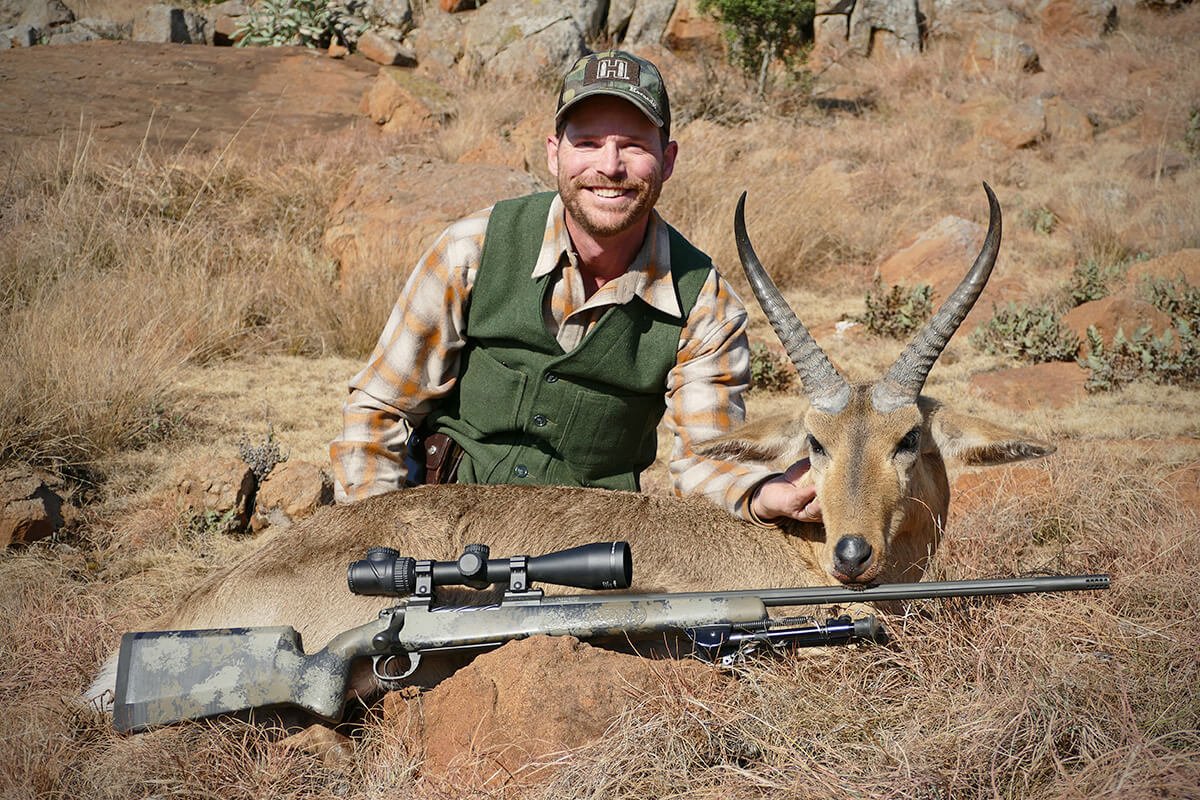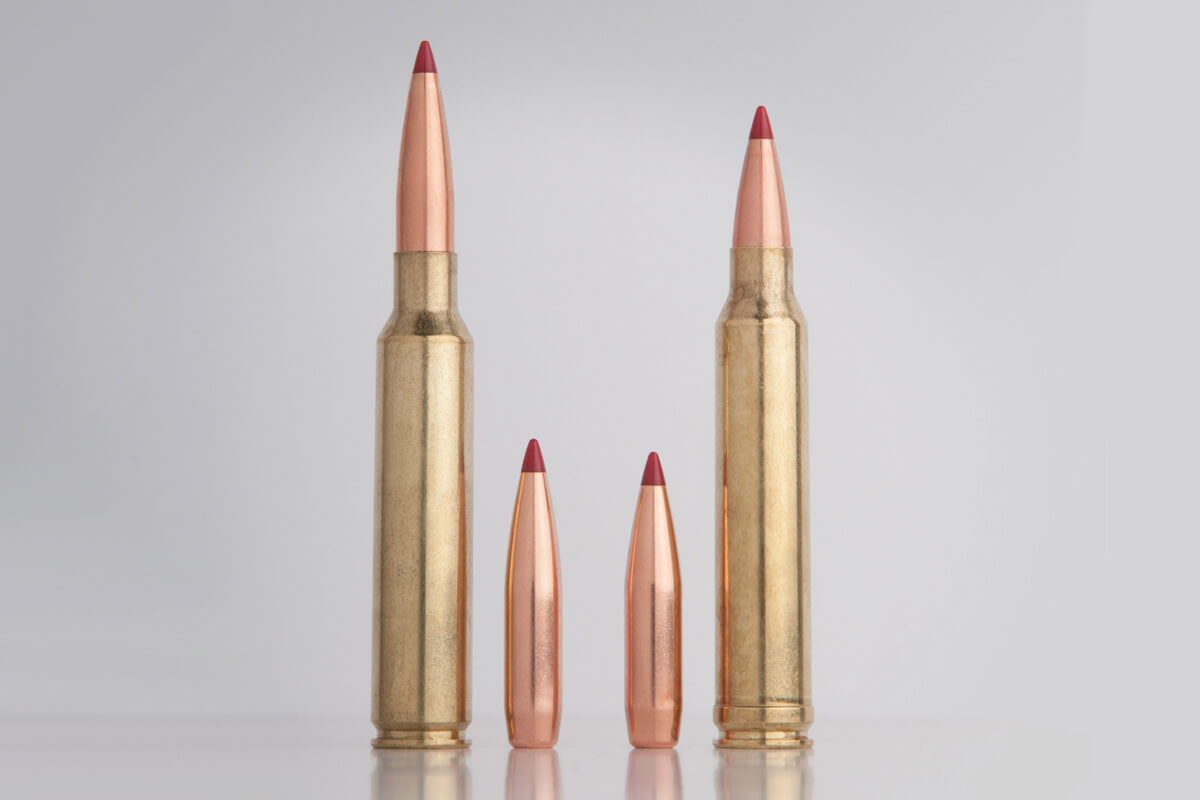
There are two big differences between the .300 PRC (left) and the .300 Win. Mag. (right). The PRC shoots high-BC bullets faster and better. The Win. Mag. is readily available anywhere in the world.
When the .300 PRC (Precision Rifle Cartridge) was announced, most shooters scoffed: “Just what we need—another .30-caliber magnum.” It seemed like the proverbial answer to an unasked question.
Then, savvy shooters took a closer look and were impressed. They gave it a try and became even more impressed.
Within three short years, the .300 PRC became the primary .30-caliber magnum challenger to the worldwide king of the .300s: the .300 Winchester Magnum. That’s a meteoric rise in prominence, rivaled only by its own smaller sibling: the 6.5 PRC.

Now that we have both “The King of .300s” and this new high-octane modern challenger, the question must be asked: Which is better?
As a philosopher might say, “The answer is very simple, yet also very complex.” Here’s the short version: Which one is better for you depends…on you.
Each .30-caliber magnum cartridge has advantages and disadvantages. Your needs as a shooter and hunter will dictate which is best—for you. But I suspect you already knew that. So, without further ado, let’s dive into the pros and cons.
Because it’s the veteran, let’s accord the .300 Win. Mag. the respect it deserves and address it first.

Table of Contents
.300 Win. Mag. Pros
The .300 Win. Mag. is the worldwide dominant .30-caliber magnum. It’s cleanly taken every big-game animal that walks American soil and probably every legal species of critter that walks the earth—anywhere. That’s including terrorists at some pretty jaw-dropping distances, in the hands of our sniper boys and their British pals.
Although its stubby neck and belted behind are outdated design characteristics that theoretically are not optimal for accuracy, the .300 Win. Mag. has always confounded its skeptics and shot better than it has any right to.
Powder-capacity-to-bore-diameter ratio is on the top side of optimal, meaning it’s on the cusp of being overbored without actually being overbored. As a result, it’s surprisingly efficient, particularly with heavy, aerodynamic bullets in the 200-grain weight range. As a lovely side benefit, such bullets absolutely wallop big game.
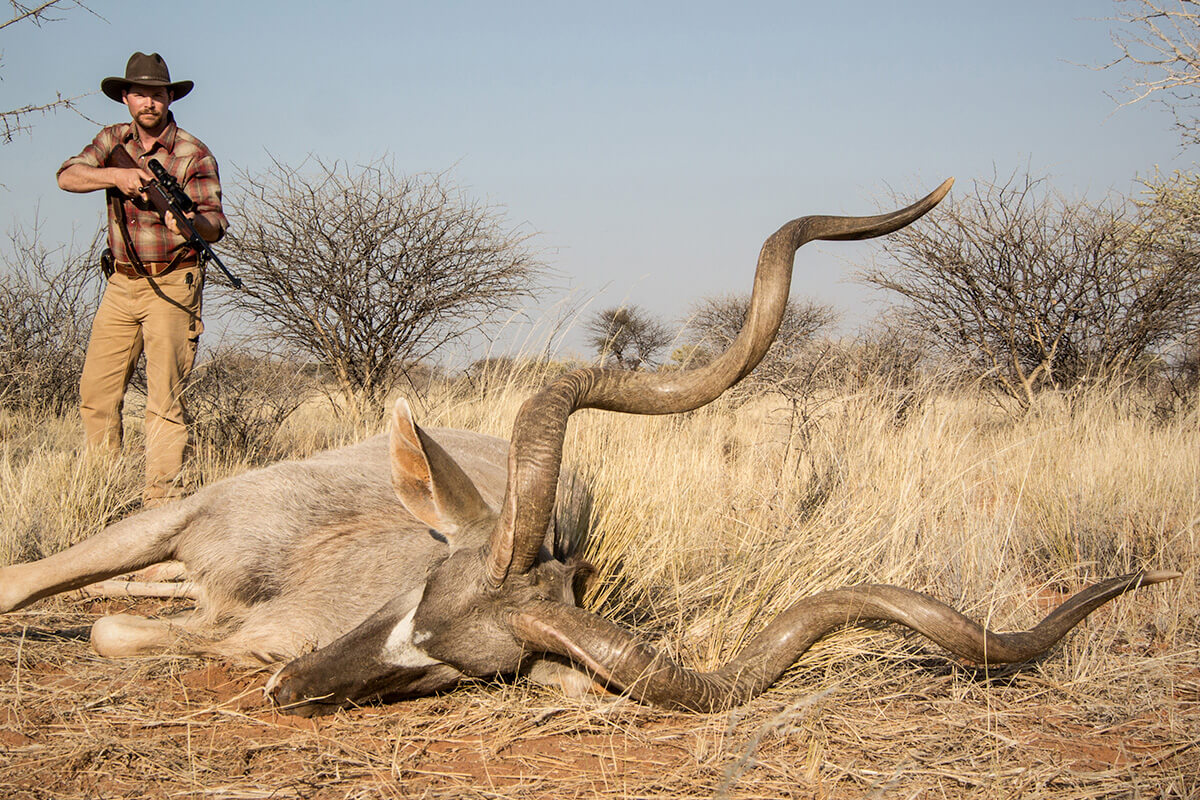
On the subject of bullets, you can get factory ammo loaded with a broad spectrum of different projectiles. Light and fast, heavy and tough, heavy and sleek and super-efficient, you name it. It’s easy to find a load tailored perfectly for your purposes, whether that purpose is shooting whitetails way off across a beanfield or moose in an alder thicket or steel targets a half-mile away.
Also, handloading data is widely available and exhaustive in scope. If our selection of factory ammo is broad, handloading potential is truly vast. Pick any bullet from 110 to 250 grains and have at it. Rifling twist rates apply.
Every rifle manufacturer offers myriad models chambered in .300 Win. Mag., so you can be really picky when selecting just the right rifle. Just as important, magazines—whether internal or detachable types—have all the wrinkles ironed out of them. Most .300 Win. Mag. rifles easily contain the advertised number of cartridges and feed them smoothly and reliably.
Because the .300 Win. Mag. is so widely respected and available around the world, it’s an excellent option for travelers—domestic and international—because even if your baggage gets separated in transit and lost, as long as your rifle arrives, you can always find ammo in a local shop.
The combined result of all these advantages stacked up is one of—if not the—best practical choices for hunting any non-dangerous game, anywhere around the world.
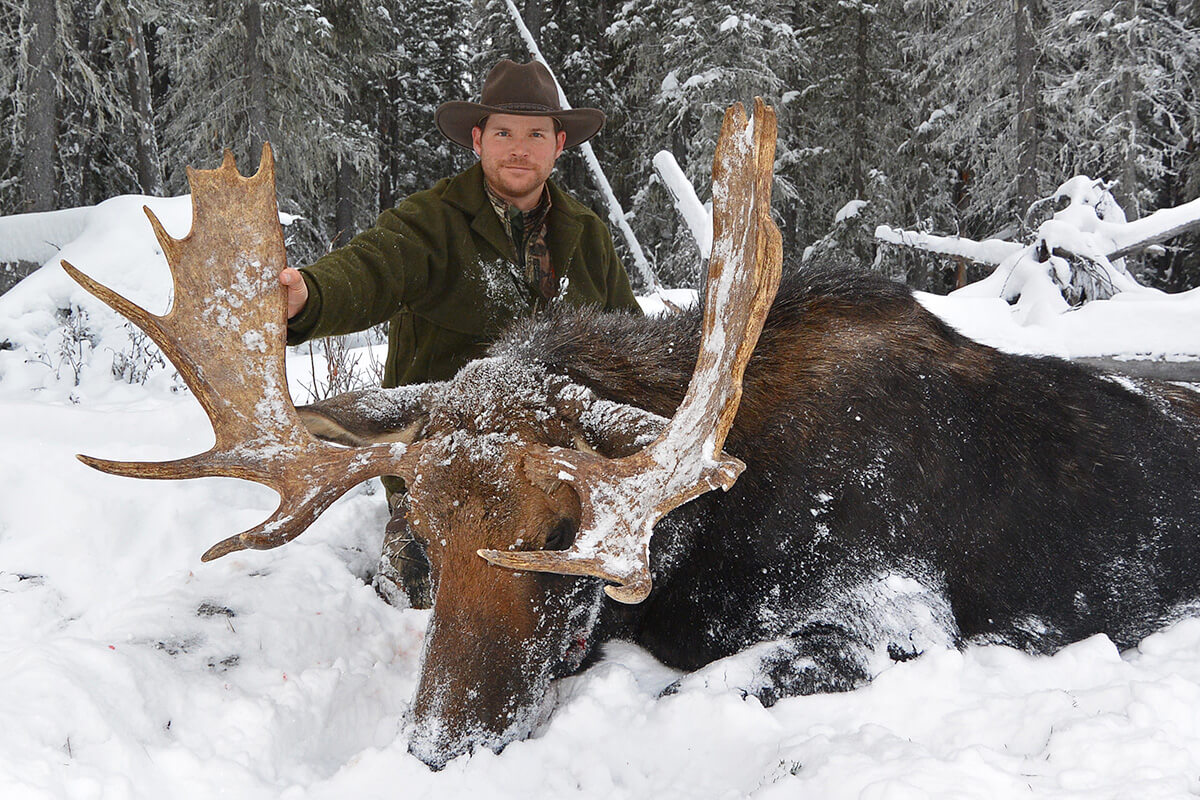
.300 Win. Mag. Cons
Okay. Here we go. The grand old king of the .30s does have some downsides, too. Mostly, it’s in the fact that many rifles chambered for it have quite loose chamber tolerances. In such, the demons contained in the short neck and belted case design emerge. They can wreak havoc with accuracy.
An old but proven cartridge design rule recommends that the neck of a cartridge be at least one caliber long, meaning that for a .30-caliber cartridge, the neck should be at least three tenths of an inch long. Designers curtailed the neck of the .300 Win. Mag., gambling that it would prove sufficient and the propellant capacity gained by pushing the shoulder of the cartridge as far forward as possible would pay off.
When manufacturing ammo, whether at the handloading bench or on the factory assembly line, it’s harder to hold tight tolerances when the neck is short. Bullet concentricity is at risk. Neck tension is less consistent. And so forth.
The belts on traditional magnum cases were originally designed to give the long, tapered cartridges of yore a predictable surface to headspace against. Holland & Holland’s .375 H&H and Super Thirty have a lot of body taper and shallow shoulders. This enables cartridges to feed like grease on glass and to extract easily and reliably—particularly important characteristics in cartridges commonly used on dangerous game in Africa and India. Easy extraction was a big deal when cordite propellant was the go-to bullet-pushing chemical of the day; it tended to exhibit pressure spikes in tropical weather conditions. Those cartridges needed the belt.
Our .300 Win. Mag., however, doesn’t need the belt. On it, the belt is just a holdover from the parent case. Had designers owned a functioning crystal ball, perhaps they would have seen fit to lathe-turn the belt off of their prototype .300 Win. Mag. cases, which would have created a really optimal cartridge case shape for the embryonic new round.
Here’s the important takeaway, folks. The belt is outdated, yes. It’s useless, yes. But the belt harms absolutely nothing at all. Performance doesn’t suffer, reliability doesn’t suffer, nothing. So quit griping about the belt.
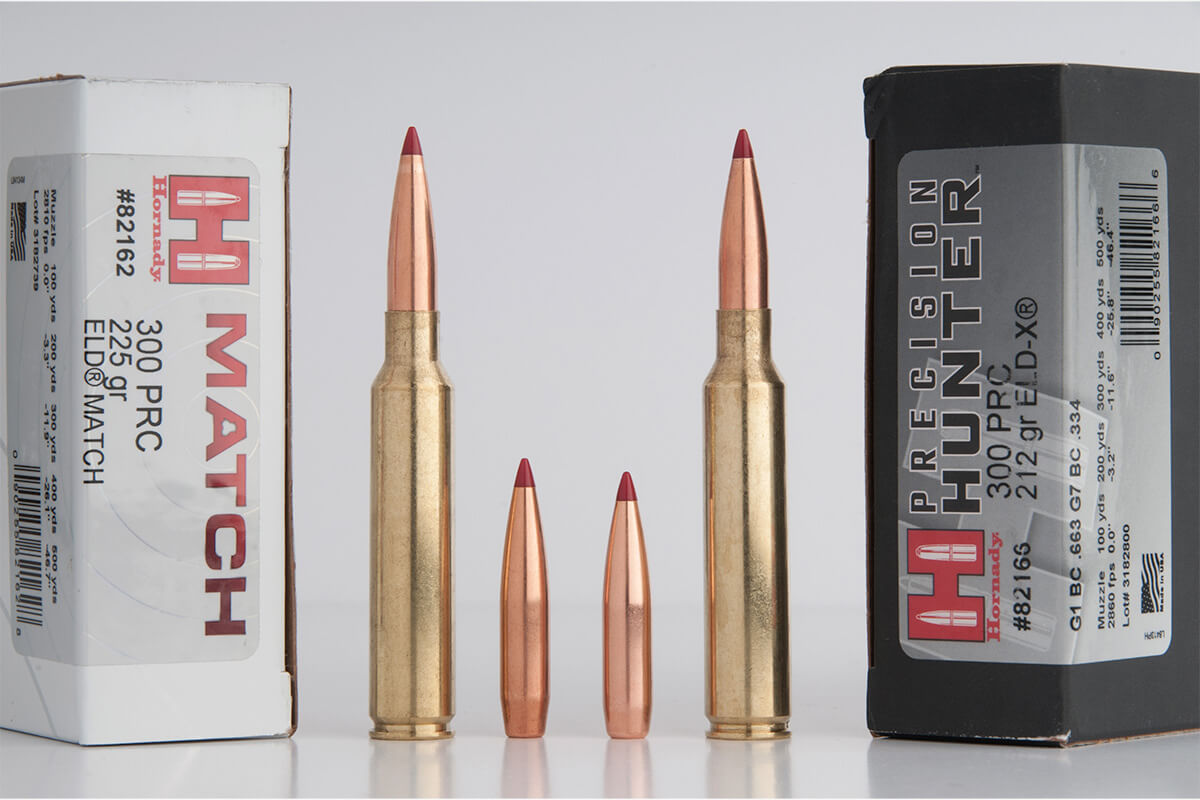
.300 PRC Pros
Ah…here we go. This is the Ferrari of rifle cartridges. Introduced in 2018, the .300 PRC utilizes a .375 Ruger case necked down to hold .30-caliber bullets. This is a broad-based, non-belted, standard-length (.30-06 length) case originally derived from the .404 Jeffery.
Geometrically, the .300 PRC case is as nearly perfect as mankind and computers can achieve. Neck length is ideal. Shoulder angle is ideal. There’s no belt around the case head. There’s little efficiency-robbing taper to the body.
“Against all odds,” naysayers grudgingly admit, “the .300 PRC has a toehold.”
“Thanks to an ultimate combination of refined characteristics,” acolytes claim, “the .300 PRC is rapidly earning the recognition it deserves.”
Both are right.
When the .300 PRC launched, we already had the .300 H&H, the .300 Win. Mag., the .300 WSM, the .300 RUM, the .300 RSAUM, the .300 Norma, the .300 Weatherby, the .30-378 Weatherby, the .300 RCM…my word, more .30-caliber magnums than a beaver could shake a stick at.
However, not one of this long list of cartridges stacks every characteristic in the “positive” column and none in the “negative.” Many have outdated case design features. Some are overbored. Some are underpowered. Some are efficient, but not configured to shoot high-ballistic-coefficient (BC) bullets with best-in-class aerodynamics.
There are very few cartridges about which one can say, “It has it all.” The .300 PRC is one. The few disadvantages associated with it—and, yes, there are some—have nothing to do with design or performance and everything to do with distribution and availability. But I’ll get to that soon enough.
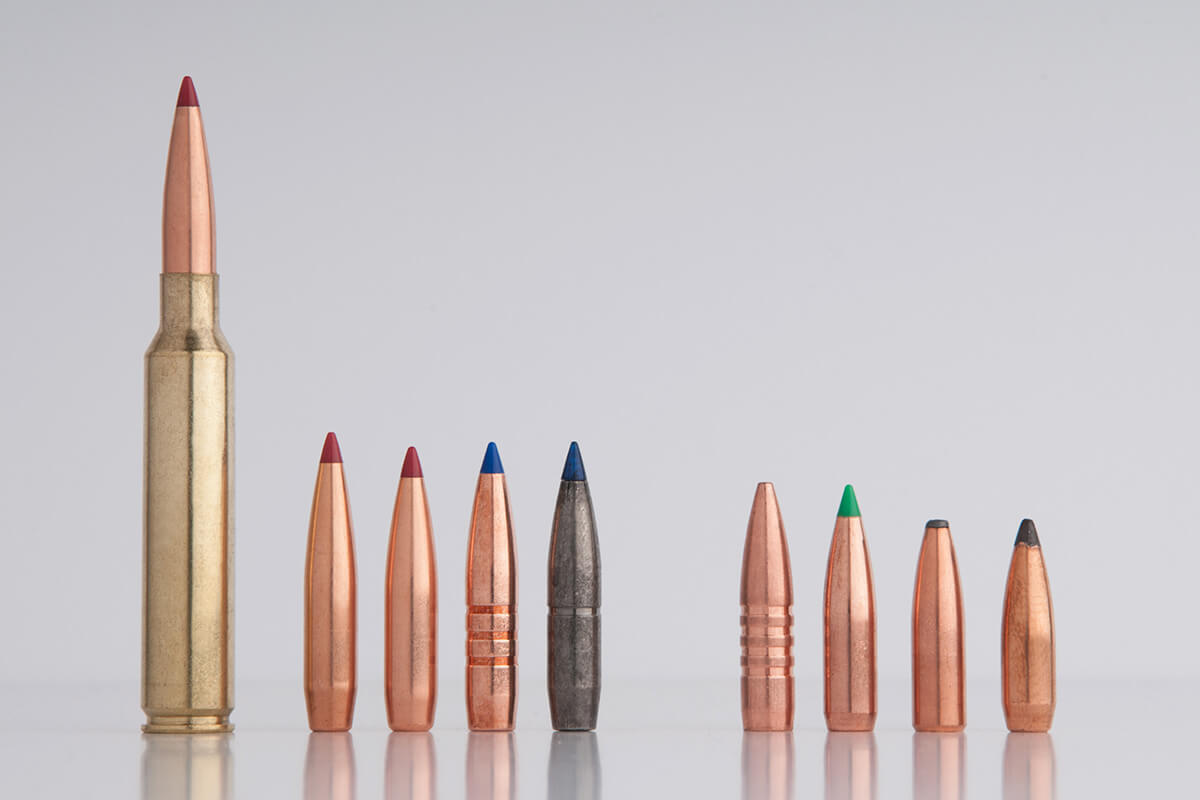
Let’s start with the most important characteristics and work down. Foremost, at least in this man’s opinion, is the fact that from the ground up the .300 PRC was engineered to provide optimal performance with long, heavy-for-caliber, high-BC bullets.
Hornady’s cartridge gurus (they’ve dreamt up and introduced the three most successful new cartridges of the 21st century) gave the .300 PRC a generous “head height.” Head height is the distance between the cartridge case mouth and the end of the magazine. It dictates how much bullet can stick out of the end of the cartridge case and still allow the whole cartridge to fit into a rifle magazine.
Traditionally, powder capacity was valued more than head height, so bullets were given short, blunt ogives (the curve from the tip of the bullet to full diameter) and seated deep into the case. Cartridge shoulders were positioned far forward so that the case would hold as much propellant as possible. That bullet bases would protrude way down into the propellant chamber was accepted as a necessary evil.
Not necessary, claimed the .300 PRC’s architects.
Case in point (if you’ll forgive the horrible pun): The thunderous .300 RUM and the .300 PRC have nearly identical overall cartridge lengths. Both require true long rifle actions. However, the shoulder on the RUM is much farther from the cartridge base. The RUM holds considerably more powder, yet the .300 PRC will shoot flatter at long range.
How? Because Hornady’s engineers optimized the efficiency of the internal combustion chamber and gave the cartridge plenty of head height. You can comfortably load .300 PRC cartridges with extremely sleek, aerodynamic bullets that have long, fine-entry noses. In the .300 PRC, bullet bases don’t protrude down into powder capacity. Projectiles start slower than the blunter bullets from the .300 RUM but hold their speed better and quickly overtake them. At extreme range, there’s just no contest.
But we’re not here to compare the .300 PRC with the .300 RUM. So how does it stack up to the .300 Win. Mag.? I love the old Winchester cartridge, so it hurts my feelings a little to say this, but the .300 PRC walks all over it, ballistically.
Why? Because the .300 PRC shoots those long, high-BC bullets that won’t fit and feed from .300 Win. Mag. magazines, and it starts them nearly as fast as the .300 Win. Mag. shoots normal bullets.
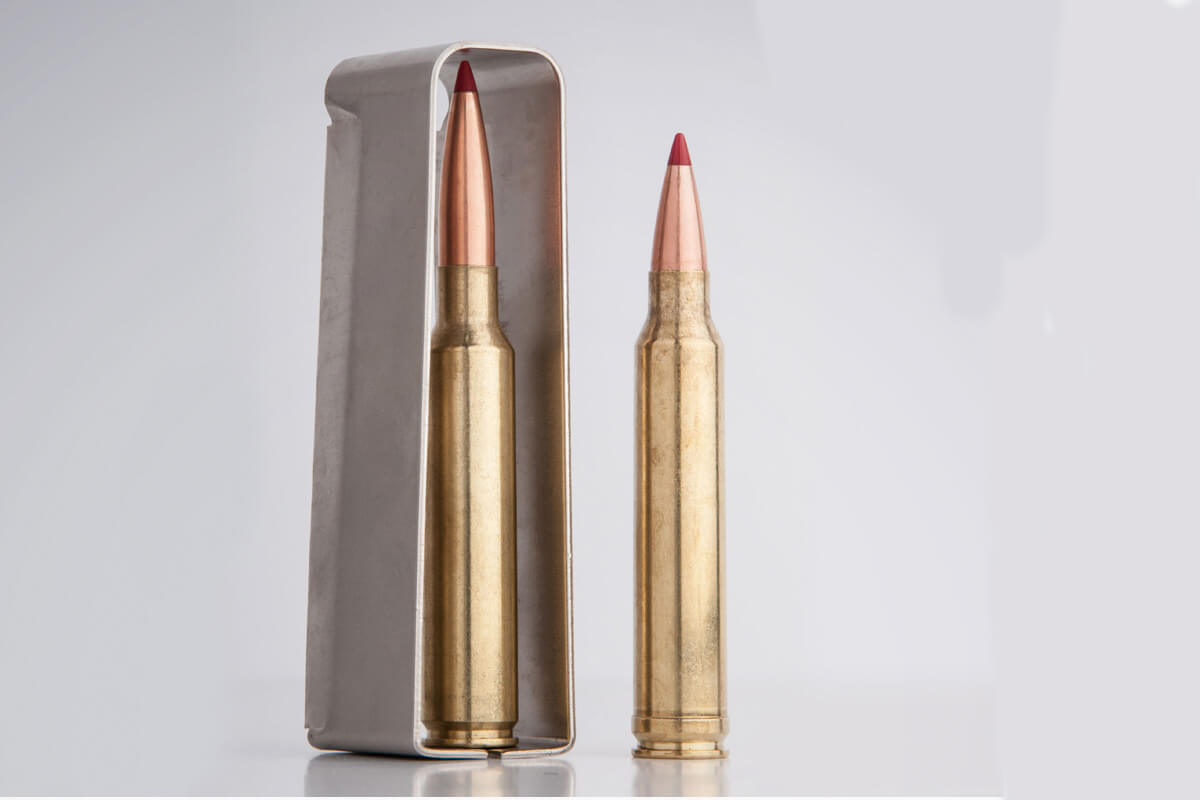
In addition to cartridge head height optimal for modern, extreme-BC bullets, the .300 PRC features a chamber spec’d with very tight tolerances. You’ll rarely, if ever, see a .300 PRC rifle that won’t shoot due to a sloppy chamber. Plus, the chamber throat and rifling leade areas are engineered for ideal compatibility with those sleek-nosed, high-BC bullets we’re making such a big deal about.
Crucially important in making all these cutting-edge puzzle pieces fit together is fast rifling. Most .300 PRC rifles have a twist rate of 1 turn in 9 inches or faster; some are as fast as 1:8. Either will properly stabilize most of today’s extreme-range superbullets.
The .300 Win. Mag. (and basically all the other .30-caliber magnums) have a 1:10 twist rate that will not adequately stabilize today’s best long-range projectiles.
Let’s move on. In the world of internal combustion, the .300 PRC has a much different chamber shape than the .300 Win. Mag. It contains more gunpowder, so one might think it crosses the cusp into overbore territory.
Nope. Not quite. Thanks to the way it holds that propellant in a broader, slightly shorter cylindrical shape, it burns a tad more efficiently than the .300 Win. Mag. When ignited from one end, a fatter, shorter column of powder burns more instantly and efficiently than a long, skinny column.
Before listing the .300 PRC’s disadvantages, let’s take a look at a ballistic comparison between it and the .300 Win. Mag.
I’ve crunched ballistics using the best high-BC factory loads listed on Hornady’s website.

In the .300 Win. Mag., the 200-grain ELD-X projectile has a G1 BC of 0.597 and a G7 BC of 0.301—really pretty darned good. It’s rated to exit the muzzle at 2,850 fps. It is, candidly, a fantastic load.
In the .300 PRC, the 225-grain ELD Match bullet has a G1 BC of 0.777 and a G7 BC of .391. That’s nearly unearthly, and it doesn’t hold a candle to the extreme-BC projectiles handloaders like me get all giddy about, such as the 250-grain A-Tip.
But I digress. The 225-grain projectile is rated to exit the muzzle at 2,810 fps, just 40 fps slower than the .300 Win. Mag. bullet.
I’ve included a chart to display long-range performance out to 1,500 yards. The ballistics were calculated using standard sea-level atmospherics, a 200-yard zero, and a 10-mph full-value crosswind.
.300 PRC Cons
The .300 PRC’s disadvantages are minuscule and don’t reflect specifically on the cartridge, but they must be considered nonetheless.
Worst is the current very limited selection of factory-loaded ammunition. As I write this, only Hornady offers factory ammo—and just two loads. This is changing fast, and I predict that within a year we will see factory-loaded .300 PRC ammo from Federal, Barnes, Winchester, Browning, and others. Many rifle companies now list the .300 PRC in their top-five sellers, and ammo companies can’t ignore numbers like that.
For now, though, non-handloaders have their pick of…Hornady and Hornady. The good news is Hornady makes great ammo.
For handloaders, the world is their .300-PRC oyster. Dies and data are readily available, and the cartridge shoots well with darn near any combination you put in it.
I can’t even list limited rifle selection as a disadvantage. Not anymore. Most of the big rifle manufacturers and all of the boutique makers worth their salt offer several excellent models in .300 PRC.
How about recoil? Well, that’s subjective. Because the .300 PRC is usually loaded with heavy-for-caliber bullets, it does kick more than the average .300 Win. Mag. load. However, if you load them both with the same bullet weight, the difference is negligible. The way I see it, that extra recoil is symbolic of the enhanced performance you get by shooting those extreme-BC projectiles. But, yes, the .300 PRC does kick.
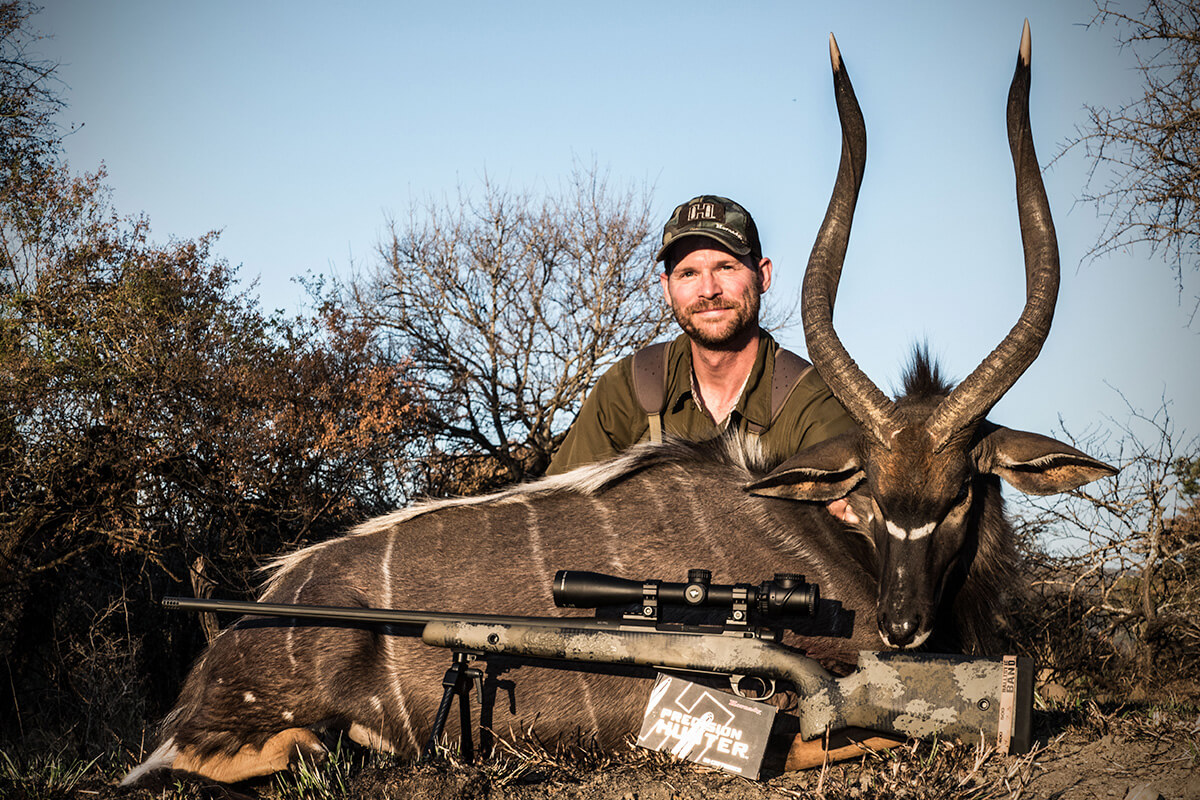
So Which Is Better?
As I mentioned in the beginning, in the final analysis, only you can decide which cartridge better fits your needs. I can give you a little guidance, though.
If you’re a practical sort, who values proven performance and ready availability, I suspect the .300 Win. Mag. is your cuppa tea.
If you like finessing the last iota of performance out of your shooting setup, and you handload, and you rarely shoot factory ammo anyway, you owe yourself a .300 PRC.
Here’s the good news. As much fun as it is to weigh every aspect and characteristic, however slight, and endlessly debate the merits of one over the other, in the end you can’t go wrong with either.
